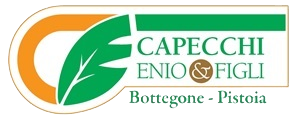In 2017, with Pistoia as the Italian Capital of Culture, our city is at the centre of a series of events, exhibitions and festivities designed to celebrate the values and culture which we have always protected and promoted.
Proud but also discreet, we are a people who believe that in order to promote yourself, you don’t have to change who you are, but rather highlight your good qualities and what makes you special. Pistoia has invested in high-quality cultural projects, and we here at Vivai Capecchi have followed suit and created a line that unites our traditions with the aesthetics and practicality that today’s market requires.
The pot that we’ve chosen is an anthracite grey bell-shaped model with a decorative relief.
Those who choose this line will be able to use it in a vast number of different ways: directly position plants on a terrace or veranda just as they arrive, adding value to any setting; they can adorn squares, public spaces, roads and museums, guaranteed to make a great impression; or, if necessary, if you need to repot in the garden, you can reuse this line for especially beautiful flowers and plants.
What is certain is that the pot is quite decorative and will complement the plant, making it ready for use, right away.
The Grey Pot selection comes in a few different options:
· 4 varieties of Miscanthus, Pennisetum and Cortaderia
· 7 varieties of Fargesia, a variety of Bambusa whose roots aren’t too far reaching, meaning it won’t infest the garden, while still being quite pretty and compact.
· 17 varieties of Hydrangea, including a few species which are rare in their colouring and their leaves and flowers.
· 4 varieties of Abelia.
Naturally, all these plants are also available in the standard pot measurements: 3 lt., 9 lt., 15 lt. and 35 lt.



















